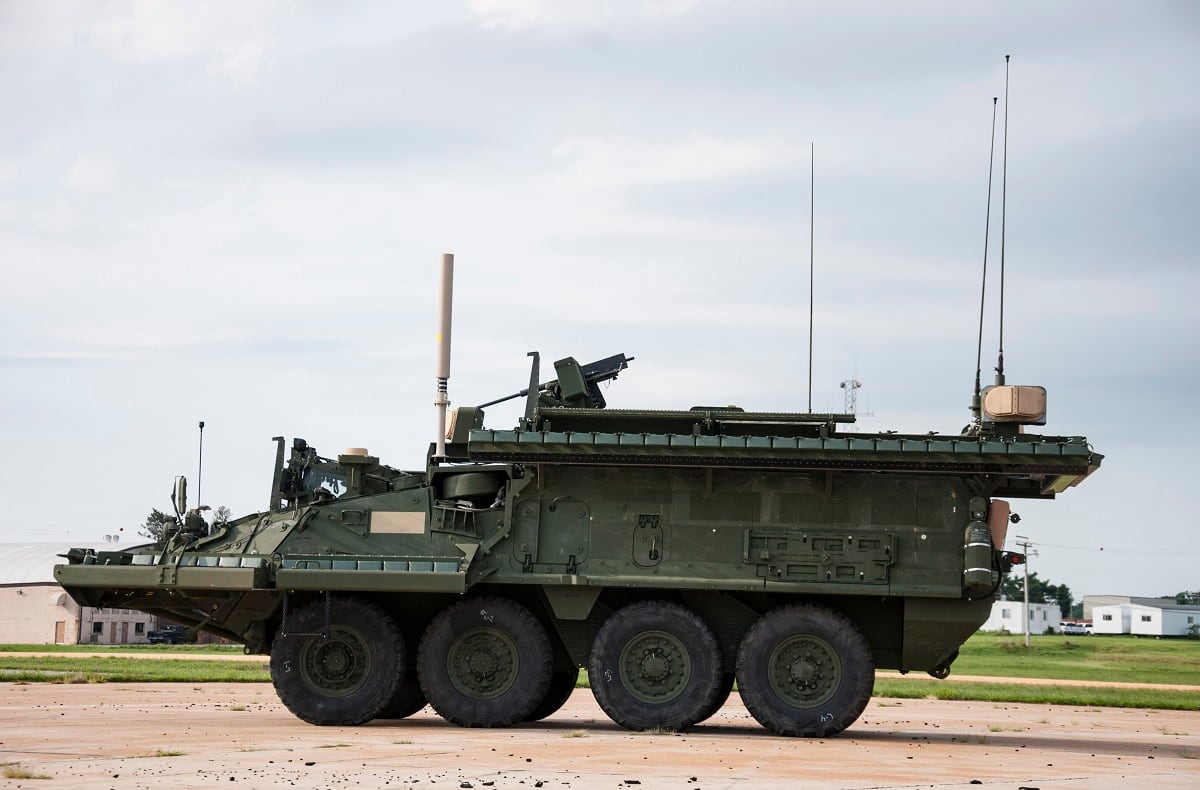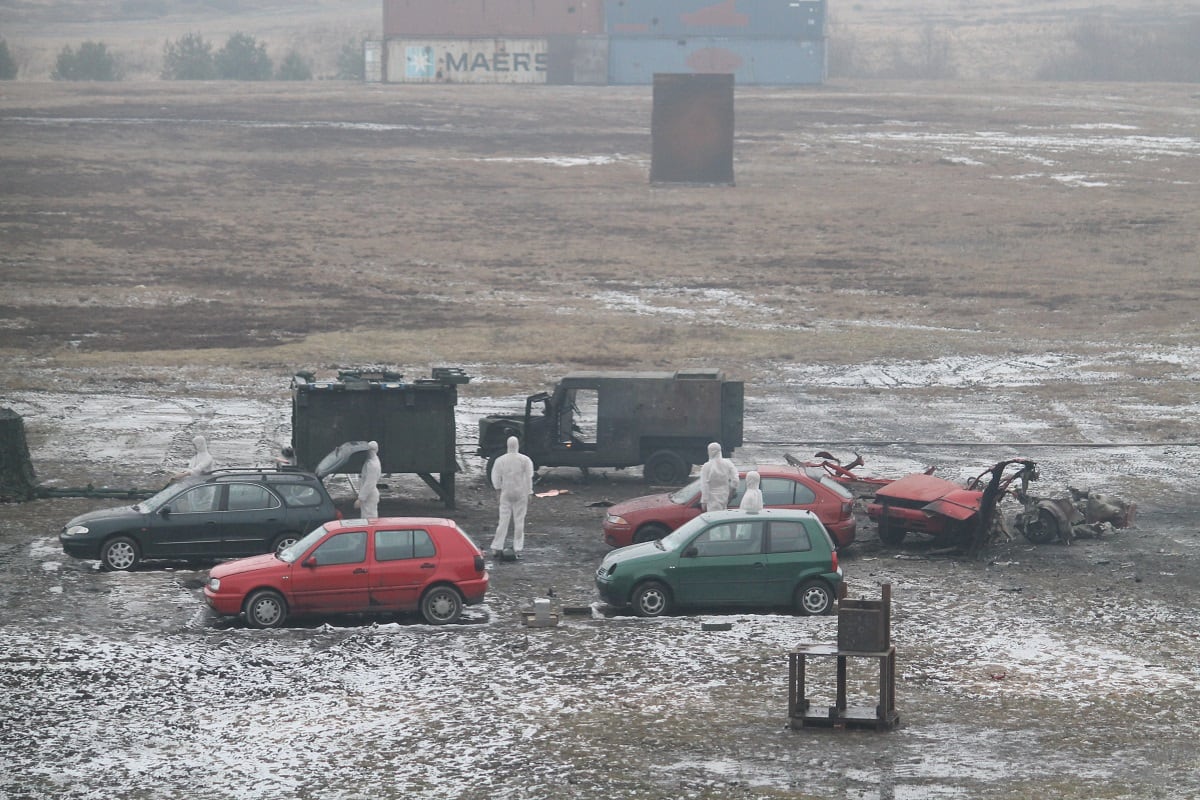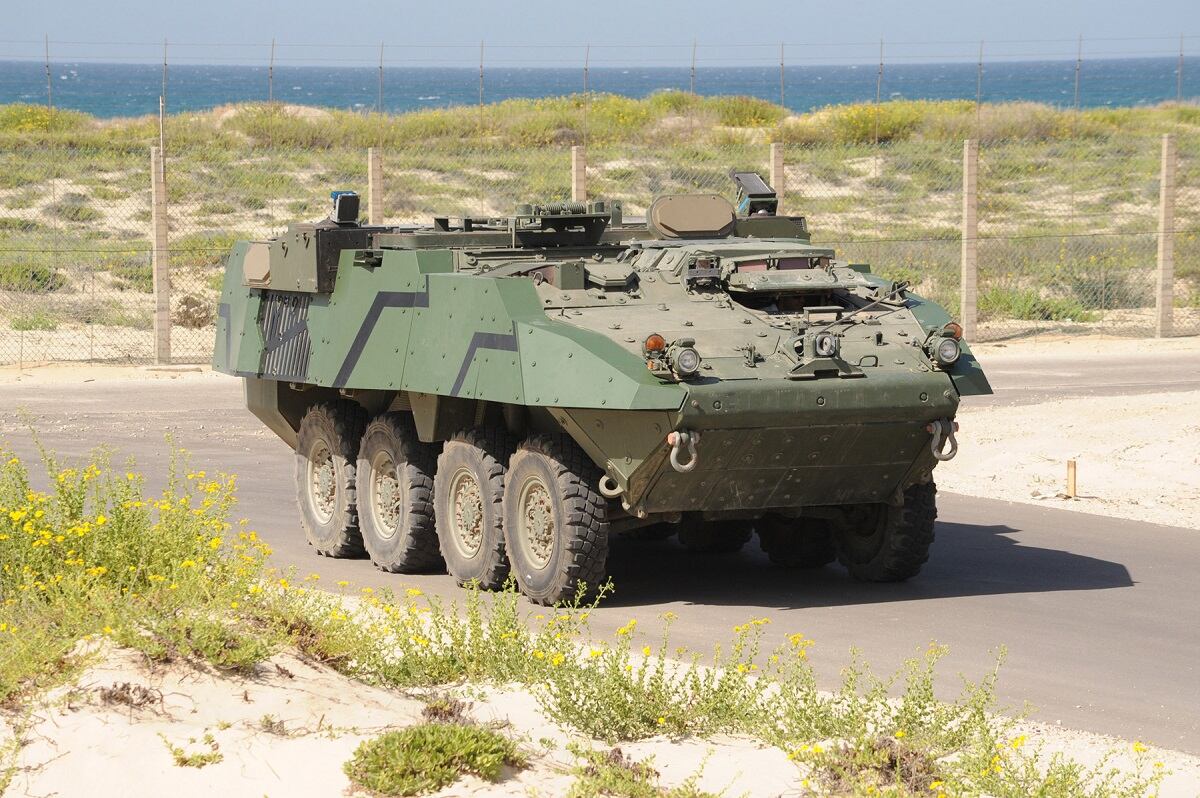WASHINGTON — The U.S. Army has decided not to continue to qualify the Iron Curtain active protection system for the Stryker combat vehicle, Col. Glenn Dean, the Army’s Stryker program manager, said in an Aug. 24 interview with several reporters.
The decision may not come as a surprise, as the Army had already issued a solicitation asking for alternative APS solutions designed to protect the Stryker from incoming projectiles at close ranges — and several companies have publicly thrown their hat in the ring for the opportunity to provide solutions that could meet the Stryker’s active protection needs.
RELATED

Iron Curtain was the only U.S.-based APS solution for Army combat vehicles. Herdon, Virginia-based Artis LLC’s Iron Curtain was selected by the Army to be qualified as an interim solution for Stryker roughly two years ago.
The Army determined it needed APS solutions to fill an immediate need while it develops its Modular Active Protection System (MAPS) and suite of Vehicle Protection Systems (VPS).
The service selected three vendors to supply commercially available APS systems to qualify them on its fleet of combat vehicles. Israel’s Rafael was picked to supply its Trophy APS system, already deployed with the Israeli military, for the Abrams tank; and another Israeli company, IMI, is supplying its Iron Fist for qualification on the Bradley Fighting Vehicle.
The Army already officially chose to field the Trophy system on four brigade sets of Abrams tanks, and according to Dean, who is also in charge of managing the interim APS capability for combat vehicles, the service is taking receipt of material for one and a half brigades, representing the initial tranche, with the intention to deliver vehicles to the Army in 2020.
But things haven’t been as easy with qualifications for Bradley and Stryker. First, funding became available later than the Abrams and Trophy effort, but both systems have had issues getting ready for Army-level testing and qualifications.
RELATED

The Army is 50 percent of the way through live-fire testing of Iron Fist on Bradley and is expected to wrap up this fall with a decision on the way forward from Army leadership to follow behind. Aside from the delay in getting started on Army-level qualifications, weather on the range has caused significant delays, Dean noted.
Iron Curtain evaluations ended this spring, and the Army took the results to leadership in May for a decision, he added.
Army leadership decided last week it wouldn’t move forward with Iron Curtain on Stryker because, while the system “generally worked in concept” and was “generally able to hit its targets,” it was not a mature enough system, Dean said, adding that to get it to the point the Army needed would have required significant time and investment, which was not “in the scope of our program.”
When asked if the system experienced any major failures, such as an inability to stop a projectile from hitting the Stryker vehicle during tests, Dean said he would not go into specifics on its performance, but added that Iron Curtain “generally performed well as a system.”
The Army is planning to hold a rodeo in November to demonstrate solutions it has not yet evaluated on a Stryker. Dean said this plan was already in the works before the Army decided not to proceed with Iron Curtain simply because Stryker Double-V Hulls were the most available as a test asset.
But now it’s also an opportunity to look for an alternative solution for the Stryker, Dean said.
The Army has $25 million in fiscal 2018 funding to assess and qualify an additional nondevelopmental APS system.
Dean made it clear the Army only wants to see solutions at the November rodeo that are not current versions of systems that have already been, or are being, evaluated.
While he wouldn’t say who might appear at the rodeo, Dean did say he’d leave it up to participants to announce their participation, adding that there’s no limit on the number of solutions that might be evaluated.
The service could also choose something already qualified on a different system, so it’s still possible a version of Trophy or Iron Fist could be considered for Stryker as well, Dean said. But those won’t be at the rodeo because the Army has already collected extensive data in order to determine suitability.
At least two companies have been invited to participate in the demonstration effort, a source told Defense News, but it’s believed there is at least one other participant likely to come out with a solution.
One of the companies that is highly likely to show is Germany’s Rheinmetall. The company encouraged the Army to also qualify its Active Defense System. The Army admitted, prior to receiving FY18 dollars, that it would want to qualify ADS if it had the funds.
RELATED

Rheinmetall is partnered with Michigan-based Unified Business Technologies, Inc. — or UBT — on the ADS design and integration efforts in the states. Former Army acquisition czar Heidi Shyu and Scott Davis, the now-retired program executive officer for the Army’s ground combat support and combat service support office, serve on UBT’s board of directors.
Another could be Rafael’s Trophy VPS — a lighter version of the system on the Abrams tank — which the company will demonstrate on a Bradley later this month in Israel. U.S. Army representatives will be in attendance.
Rafael chose Bradley for the demonstration because of its availability as a platform for tests, but has said Trophy VPS can also be integrated onto Stryker and other lighter combat vehicles.
RELATED

It seems to be somewhat of a mystery what other APS solutions may surface to demonstrate nondevelopmental capability on a Stryker platform, according to a source.
Jen Judson is an award-winning journalist covering land warfare for Defense News. She has also worked for Politico and Inside Defense. She holds a Master of Science degree in journalism from Boston University and a Bachelor of Arts degree from Kenyon College.








